IMMORTAL
S I N S
a fantasy
freeform interactive drama
live action roleplaying scenario
written by
James O'Rance
Portions of the playbook reprinted with permission.
directed by
Brian David Phillips
10 June 2020, 1:10am
202 & 204 Research, NCCU
This is a Closed Performance for
Students of Oral Training and Reading Courses
Taught by Dr. Phillips and Mr. Cheng
ONLY
Facebook Troupe Group
https://www.facebook.com/groups/taiwaninteractivedrama
NCCU Rec Room LARP Group
https://www.facebook.com/groups/1452195971691752
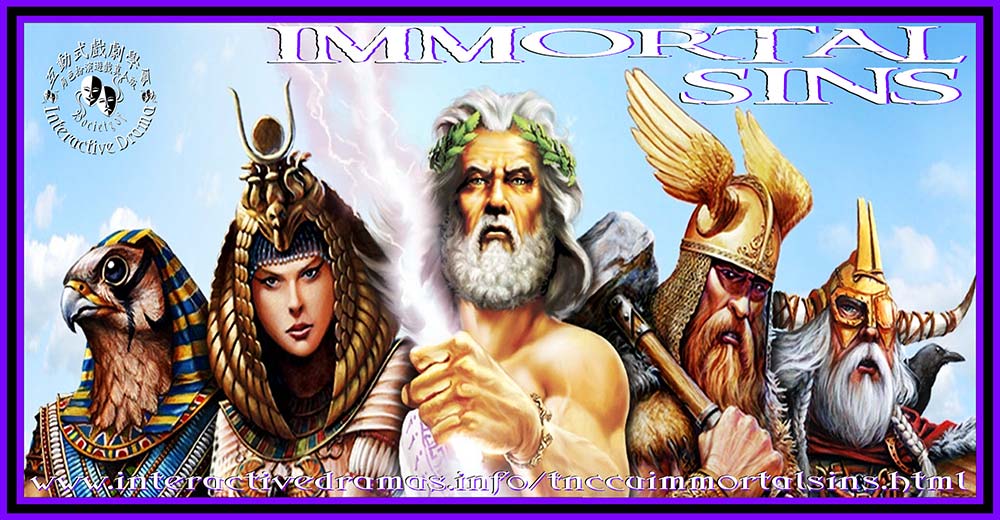
This scenario is scheduled for performance 10 June 2020, directed by Brian David Phillips. This is an archive of our promotional material for the session as well as information for current performances. Best Roleplayer, Best Communicator, Best Costume, and Best Group Costumes awards to be given.
A complete archive of photos of various performances of this scenario by the Taipei Interactive Theatre Socity and by students at National Chengchi University can be found in the Interactive Drama Photo Gallery maintained by Dr. Phillips.
Current students in classes taught by Brian David Phillips and Michael Cheng will note that this briefing sheet will be helpful to them as well. While casting information may be different, the background and rules are quite helpful.
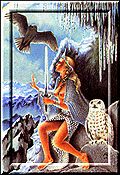

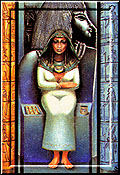
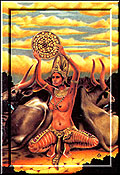

The gods are divided into Pantheons. Every few thousand years, they must meet at the Conclave and forge anew the Agreement that allows them to coexist across the Multiverse. It is now time for the gods to once again meet, but this time, something has changed . . . for their very existence may now be at stake . . . someone or something is killing gods.
 For hundreds of thousands of millions of years you have been under the peace of the "Conclave" - an agreement that has stood as the only thing keeping certain pantheons from destroying all of the others.
For hundreds of thousands of millions of years you have been under the peace of the "Conclave" - an agreement that has stood as the only thing keeping certain pantheons from destroying all of the others.
Each few millennial times, at the Conclave festivities, the representatives of the pantheons meet, to renew the Conclave, to make the decisions that affect all pantheons, and to protect and nurture the multiverse as a whole. Each pantheon must pay tribute to the wisdom of the conclave.
An Interactive Drama in a place far far away in a time long long ago. Costuming is desired, appropriate to the pantheon and culture of the character.
| Genre: |
Fantasy |
| Problem Solving: |
Yes |
| Drama: |
Yes |
| Intrigue: |
A great deal |
| Catharsis: |
Anything is possible |
| Adult Concepts: |
Some, Mythological |
| Fun: |
Lots and lots and lots |
| Director: |
Brian David Phillips |
| Instructors: |
Brian David Phillips and Michael Cheng |
| Venue: |
202 & 204 Research, NCCU
Note the Classroom Change. |
| Date: |
Wednesday, 10 June 2020 |
| Time: |
1:10-4:00 |
| Note:: |
If you enjoy this type of activity, see Dr. Phillips or Mr. Cheng about joining the Taiwan Interactive Theatre Society! Check out our Facebook group at https://www.facebook.com/groups/taiwaninteractivedrama |
The Cast
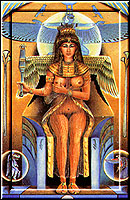
CAST OF CHARACTERS
(Directed by Brian David Phillips) |
| # |
CHARARACTER |
PLAYER |
PANTHEON |
INSTRUCTOR |
01 |
Demogorgon |
Eva Wu |
Abyss |
Cheng |
02 |
Graz’zt |
Shiny Tseng |
Abyss |
Cheng |
03 |
Kiaransalee |
Diana Chang |
Abyss |
Cheng |
04 |
Lolth |
Vicky Chang |
Abyss |
Cheng |
05 |
Anu |
Benny Lee |
Babylonian |
Cheng |
06 |
Ishtar |
Jeannie Huang |
Babylonian |
Cheng |
07 |
Nergal |
Cathy Fan |
Babylonian |
Cheng |
08 |
Ereshkigal |
Rachel Tsai |
Babylonian |
Cheng |
09 |
Gabriel |
Gary Li |
Celestials |
Phillips |
10 |
Michael |
Brad Huang |
Celestials |
Phillips |
11 |
Raphael |
Jasper Pan |
Celestials |
Phillips |
12 |
Uriel |
Henry Li |
Celestials |
Phillips |
13 |
Bast |
Mina Fan |
Heliopolitan |
Cheng |
14 |
Horus |
Jimmy Tang |
Heliopolitan |
Cheng |
15 |
Osiris |
Kyle Wang |
Heliopolitan |
Cheng |
16 |
Set |
Aryna Hsu |
Heliopolitan |
Cheng |
17 |
Fierana |
Jessie Wang |
Hell |
Cheng |
18 |
Levistus |
Kaelyn Chen |
Hell |
Cheng |
19 |
Triel |
Jenny Lin |
Hell |
Cheng |
20 |
Hela |
Olivia Wang |
Norse |
Phillips |
21 |
Loki |
Joanne Hsiao |
Norse |
Phillips |
22 |
Thullen |
Ramon Ai |
Norse |
Phillips |
23 |
Freya |
Leia Lee |
Norse |
Phillips |
24 |
Hades |
Gaven Dai |
Olympian |
Phillips |
25 |
Hecate |
Winnie Ho |
Olympian |
Phillips |
26 |
Hermes |
Leo Jheng |
Olympian |
Phillips |
27 |
Aphrodite |
Jenny Chung |
Olympian |
Phillips |
28 |
Athena |
Roamer Chang |
Olympian |
Phillips |
29 |
Chronepsis |
Ryan Chen |
Dragon |
Cheng |
30 |
Gilean |
Lynn Chu |
Dragon |
Cheng |
31 |
Paladine |
Carolyn Lin |
Dragon |
Cheng |
32 |
Takhisis |
Lucy Li |
Dragon |
Cheng |
33 |
Ambar |
Ken Hsu |
Individual |
Phillips |
34 |
Aoskar |
Kevin Wang |
Individual |
Phillips |
35 |
Ombidias |
James Luo |
Individual |
Phillips |
36 |
Quetzacoatl |
Augustine Wu |
Individual |
Phillips |
37 |
Ki |
Quinn Yen |
Individual |
Phillips |
38 |
Primus |
Michael Cheng |
Individual |
Cheng |
39 |
Ma Yuan |
Ying Xuan Goh |
Individual |
Cheng |
40 |
Ssendam |
Alicia Lai |
Individual |
Cheng |
41 |
Jemorille |
Amber Tsai |
Non-Divine |
Cheng |
42 |
Rhys |
Anny Huang |
Non-Divine |
Cheng |
43 |
Skall |
Peggy Chen |
Non-Divine |
Cheng |
44 |
Srowl |
Winnie Hsiao |
Non-Divine |
Cheng |
45 |
Zadara |
Nini Cheng |
Non-Divine |
Cheng |
00 |
Director |
Brian David Phillips |
Director |
Phillips |
There is plenty of room for more members of the Taiwan Interactive Theatre Society . . . so if anyone else would like to join the fun, email Brian David Phillips as soon as possible. We would appreciate it if players only sign up for a role in this scenario if they intend to attend and plan to be in costume. Read the House Rules for more information.
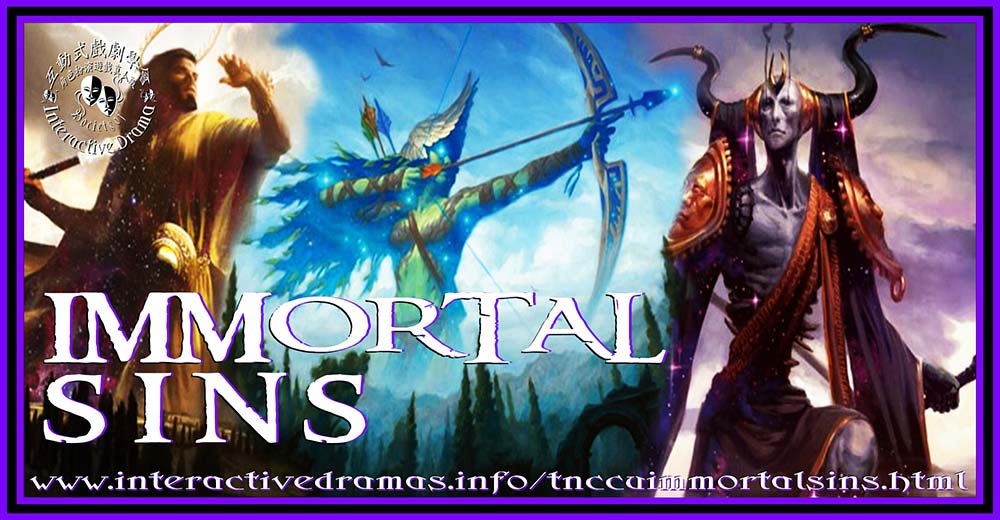
IMMORTAL
S I N S
The Divine Conclave
Every few years, prominent members of each pantheon meet at an infinitely tall spire of rock named the Spire. Here, they make sure that divine treaties are being observed, argue for the creation of new ones, and make cases to discard those that are outdated. The area around the Spire cancels all magic – even that of the gods – and so the deities can meet there without fear of being lured into a trap.
Naturally, divine conclaves are always conducted under the strictest secrecy, and mortals are forbidden to attend. Those beings that live by the Spire, the Rilmani, guard the Conclave. It is in their best interest to do so – the Rilmani enforce Neutrality across the multiverse, and the fact that the gods can meet at all is a good sign that the Balance of good, evil, law, and chaos has been preserved.
Current Divine Treaties
 Alliances between the gods seem to wok best when those involved are reasonable, benevolent deities. It’s when two egotistical gods butt heads that sparks start to fly. To prevent such problems, the heads of each pantheon got together and established standard agreements. Any god who violates them is asking for trouble. Currently, the rules of the divine compact are:
Alliances between the gods seem to wok best when those involved are reasonable, benevolent deities. It’s when two egotistical gods butt heads that sparks start to fly. To prevent such problems, the heads of each pantheon got together and established standard agreements. Any god who violates them is asking for trouble. Currently, the rules of the divine compact are:
- Gods are forbidden to manifest their entire divine might on the mortal plane; dealing with mortals is limited to visions, dreams, and temporary visitations.
- Gods are allowed their feuds, but they may not launch a full-scale war that involves more than two gods. A divine battle is strictly a two-party fight.
- Gods may not slay the worshippers of other gods, nor instruct their followers to do so. They can try to convert mortals to their worship, but killing them is not allowed (this rule is broken frequently). The only official exception to this agreement is when two gods go to war.
- All gods who participate in the creation of a new world on the mortal plane may create mortal worshippers to live on that world.
- Gods may grant miraculous powers to their priests on the mortal plane. .
Divine Abilities
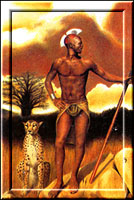 Some gods are more powerful than others. In this freeform, the gods are divided into several different statures: Greater, Intermediate, Lesser, and Demigods. Those special beings that are of semi-divine nature, but are not actual gods, are referred to as Lords (for example, the Lords of Hell or the Lords of the Abyss).
Some gods are more powerful than others. In this freeform, the gods are divided into several different statures: Greater, Intermediate, Lesser, and Demigods. Those special beings that are of semi-divine nature, but are not actual gods, are referred to as Lords (for example, the Lords of Hell or the Lords of the Abyss).
All gods have the following powers:
- Comprehend Languages – All gods understand and can communicate in any language they choose.
- Immortality – All gods are immortal. The only way for a god to die is to be destroyed by a god of higher stature in magical or physical combat (or by any god with an artifact). As all gods are physically very robust, such battles can last days and shake worlds. Any other attack that might destroy a god causes it to disperse and reform afterwards.
- Omniscience – All gods have the ability to know what is happening to their worshippers and sacred relics.
- Magick Use – All gods may invoke magical powers of any sort, requiring only the slightest act of will on the part of these incredible beings. Whilst no magic of any sort may be used at the Spire, a god may nonetheless cause magical events to occur upon the mortal plane via his Spheres of Influence.
WHO'S WHO
(Conclave Representatives)
LORDS of The ABYSS
| DEITY |
DESCRIPTION |
| Demogorgon |
This bizarre reptilian demon has managed to become a minor god. She is hateful and devious. |
| Graz’zt |
A subtle and urbane demon, Graz’zt has not yet managed to become a true god. Her schemes are mysterious and deadly. |
| Kiaransalee |
A chaotic, insane goddess of vengeance and the undead. She is worshipped by the evil dark elven race. |
| Lolth |
Queen of the Demonweb Pits, Lolth is an evil goddess of dark elves and spiders, and one of the most feared goddesses of the Abyss. |
LORDS of HELL
| DEITY |
DESCRIPTION |
| Fierana |
A female beauty who rules over a realm of volcanic fire. She has always kept herself hidden, even from immortal eyes. |
| Levistus |
The Princess of Stygia is a treacherous, hateful purveyor of lies, the least trustworthy of her kind. |
| Triel |
Known as the Slug archduke, Triel was once a glorious celestial who fell from grace due to sinful vanity and excessive contemplation of her own perfection. |
CELESTIALS
| DEITY |
DESCRIPTION |
| Gabriel |
An emerald winged messenger, warrior, and prophet. |
| Michael |
The mightiest of the celestial host. |
| Raphael |
The healer and keeper of sacred truths. |
| Uriel |
The Lord of purity and flame. |
BABYLONIAN GODS
| DEITY |
DESCRIPTION |
| Anu |
King of the Sky, Anu is a creator of mortal worlds and leader of the Babylonian pantheon. He is a Greater God. |
| Ishtar |
Goddess of Love and of War, Ishtar is neutral in most divine matters. She most often uses her power over war to prevent it happening. Sister to Ereshkigal. |
| Nergal |
A minor god of death and decay, Nergal has lost much of her power to other death gods throughout the last few eons. |
| Ereshkigal |
She is the true goddess of the underworld rules over all things that are dead and never uses any form but a human one, that of a beautiful woman. Sister to Ishtar. |
HELIOPOLITAN GODS
| DEITY |
DESCRIPTION |
| Bast |
Cat-headed goddess of sensuality; in her aspect as the Eye of Ra, Bast is a terrible and fierce warrior. |
| Horus |
The hawk-headed god of warriors and vengeance. He has a terrible feud withSet whom he once bested in combat. |
| Osiris |
A senior member of the Heliopolitan pantheon, Osiris is a god of plant life and the dead. He was once killed by Set but has since been reborn. |
| Set |
Set is an evil god of storms and darkness. She is barely tolerated by the other Heliopolitans. However her might is great. |
OLYMPIAN GODS
| DEITY |
DESCRIPTION |
| Hades |
Hades is the oldest of the Olympians and Lord of the Dead. He is a Greater God, known to have vast influence and wealth. |
| Hecate |
A goddess of magick, Hecate’s gifts are valuable, but dangerous. |
| Hermes |
A god of messengers, and the most popular of the Olympian pantheon. He also possesses a strange power not understood by the other gods. |
| Aphrodite |
Godess of love and fertility, a beautiful and jealous goddess. |
| Athena |
Goddess of wisdom and war, she is both wise and one to be reckoned with. |
NORSE GODS
(Asgardian and Vanir)
| DEITY |
DESCRIPTION |
| Hela |
Hel is a goddess of the unvalourous dead, and the daughter of Loki. She is prophesied to invade Asgard during Ragnarok, the foretold death of the Norse gods. She seeks revenge for past wrongs. |
| Loki |
A god of mischief and strife, who is always making trouble for the other Norse gods. |
| Thullen |
Thüllen is a powerful servant of Odin, the All-Father of the Norse pantheon. His body is carved with many bleeding runes. |
| Freya |
Goddess of love and fertility and of war, she is also wise and magickal. Her chariot is pulled by her companion giant cats which are magickal and special. She is the leader of the Valkyries. |
DRAGON GODS
| DEITY |
DESCRIPTION |
| Chronepsis |
The dragon deity of fate and death, Chronepsis has secrets concerning the greatest treasures in the multiverse. |
| Gilean |
A perfect scribe elevated to divintity, Gilean holds a book that contains all of the knowledge of the multiverse. |
| Paladine |
A god of Law, honour, and noble dragons, Paladine is known to care deeply about the welfare of mortals. |
| Takhisis |
A goddess of hate, war, and vile dragons, in the past Takhisis has attempted to conquer the mortal plane. |
INDIVIDUAL GODS
| DEITY |
DESCRIPTION |
| Ambar |
This demigod has formed very recently. Although he seems to be a deity of light, nothing is yet known of this new deity. |
| Primus |
The god of modrons, a clockwork race from the plane of utter Law. Primus is ultimate logic, reason, and perception. He rarely chooses to leave his citadel, much less travel to parley with other gods. |
| Aoskar |
The God of Portals and Gates was long thought to be dead, killed by the Lady of Pain. But now he seems to have returned. |
| Ma Yuan |
An ancient and fearsome reptile is the Killer of Gods, also known as Apep, Ma Yuan, and Jormungandr, among other names. None have ever been able to escape when Ma Yuan hunts. |
| Ombidias |
A recently formed demigod, brother to Ambar. Nothing is known of this deity. |
| Ssendam |
A Lord of Chaos, responsible for spreading Insanity throughout the multiverse. |
| Quetzacoatl |
This god is the feathered serpent and bringer of knowledge to mortal cultures. He has come to the Spire, seeking justice for a crime done to one of his kind. |
| Ki |
The divine form of nature, he-she is Father-Mother Earth. He-she appears as an elfin man or woman of great beauty. |
NON-DIVINE ENTITIES
| DEITY |
DESCRIPTION |
| Jemorille |
Also known as “The Exile”, Jemorille is an entity of absolute Neutrality. She manipulates mortals to preserve the Balance of Neutrality throughout the multiverse. |
| Rhys |
A transcendent mortal, approaching true oneness of mind and body. |
| Skall |
An ancient undead being, who believes that Death is absolute Truth and the natural state of the muliverse. |
| Srowl |
Seeming to be no more than an intelligent tigress, Srowl is the blessed servant of the Cat Lord. |
| Zadara |
A titan who has fallen from grace due to her arrogance in declaring herself a god. |
ALIGNMENT
Characters in Immortal Sins have an Alignment attribute.
In this interactive drama setting, alignment is a categorization of the ethical - Law/Chaos axis - and moral - Good/Evil axis - perspective of gods, people, creatures, and societies.
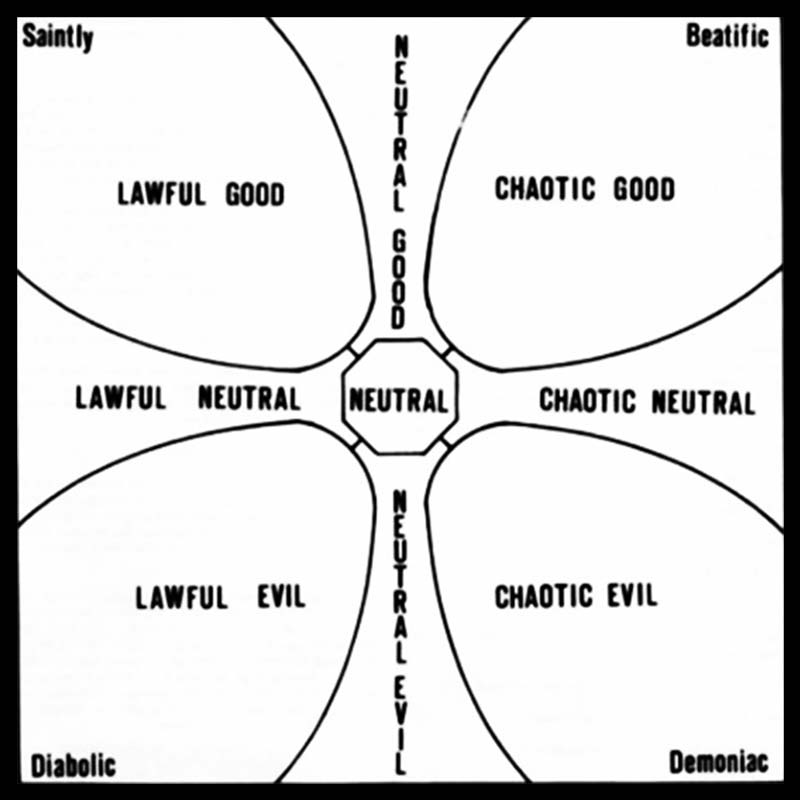
The first axis is that of one's ethical values: Lawful, implying honor and respect for society's rules: Chaotic, implying rebelliousness and individualism; and Neutral, being the middle ground between the two.
The second axis is that of one's morality, empathy, and value of others and life in general: of Good, implying altruism and respect for life; Evil, implying the absence of altruism and no respect for life; and Neutral, the middle ground between the two.
The two axes allow for nine alignments in combination.
The nine alignments can be shown in a grid, as follows:
| Lawful Good |
Neutral Good |
Chaotic Good |
| Lawful Neutral |
(True) Neutral |
Chaotic Neutral |
| Lawful Evil |
Neutral Evil |
Chaotic Evil |
Your character sheet provides specifics on your own alignment and values.
Function
Alignment is a way to categorize players' characters, along with gender, race (or what would be called sub-species in taxonomic rank), class, and sometimes nationality or pantheon. Alignment was designed to help define role-playing, a character's alignment being seen as its outlook on life. A player decides how a character should behave in assigning an alignment, and should then play the character in accordance with that alignment.
Alignments can change. If a Lawful Neutral character consistently performs good acts, when neutral or evil actions were possible, its alignment will shift to Lawful Good. In games, the director decides when alignment violations occur, as it is subjective. As much as possible, play the role according to the alignment assigned.
Characters acting as a party or as allies should have compatible alignments. Lawful Good characters are compatible with Lawful Evil characters if they have a common goal, but the addition of a Chaotic Evil character may tear the party apart.
Axes
Law vs Chaos
The law versus chaos axis predates good versus evil in the setting rules. In esoteric lore, too, the precepts of law and chaos predate good and evil in the world's prehistory and the history of the multiverse.
Originally the Law/Chaos axis was defined as the distinction between "the belief that everything should follow an order, and that obeying rules is the natural way of life", as opposed to "the belief that life is random, and that chance and luck rule the world".[8] According to the early rulebook, Lawful characters were driven to protect the interest of the group above the interest of the individual and would strive to be honest and to obey just and fair laws. Chaotic creatures and individuals embraced the individual above the group and viewed laws and honesty as unimportant.
- Law implies honor, trustworthiness, obedience to authority, and reliability. On the downside, lawfulness can include closed-mindedness, reactionary adherence to tradition, judgmentalness, and a lack of adaptability. Those who consciously promote lawfulness say that only lawful behavior creates a society in which people can depend on each other and make the right decisions in full confidence that others will act as they should.
- Chaos implies freedom, adaptability, and flexibility. On the downside, chaos can include recklessness, resentment toward legitimate authority, arbitrary actions, and irresponsibility. Those who promote chaotic behavior say that only unfettered personal freedom allows people to express themselves fully and lets society benefit from the potential that its individuals have within them.
- Someone who is neutral with respect to law and chaos has a normal respect for authority and feels neither a compulsion to follow rules nor a compulsion to rebel. They are honest but can be tempted into lying or deceiving others if it suits him/her.
It is more common for creatures to be Neutral with regard to Law/Chaos than Good/Evil. However, certain extraplanar creatures are always Lawful. Conversely,other creatures from the planes are Chaotic, representing beings of chaos. Dwarven societies are usually Lawful, while Elven societies are most often Chaotic.
Good vs Evil
The conflict of good versus evil is a common motif in fantasy fiction. Although player characters can adventure for personal gain rather than from altruistic motives, it is generally assumed that the player characters will be opposed to evil and will tend to fight evil creatures.
- Good implies altruism, respect for life, and a concern for the dignity of sentient beings. Good characters make personal sacrifices to help others.
- Evil implies harming, oppressing, and killing others. Some evil creatures simply have no compassion for others and kill without qualms if doing so is convenient or if it can be set up. Others actively pursue evil, killing for sport or out of duty to some malevolent deity or master.
- People who are neutral with respect to good and evil have compunctions against killing the innocent but lack the commitment to make sacrifices to protect or help others. Neutral people are committed to others by personal relationships.
Alignments
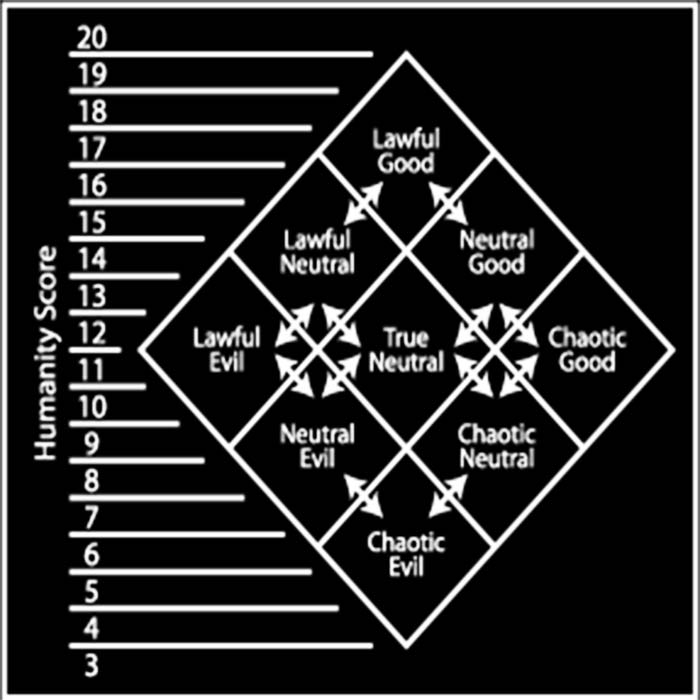
While the perception of and choice of alignment has shifted over the years in fantasy milieu, there have been as many as nine alignments possible for people, creatures, deities, and extraplanar realms.
Lawful Good
A Lawful Good character typically acts with compassion, and always with honor and a sense of duty. A Lawful Good nation would consist of a well-organized government that works for the benefit of its citizens. Lawful Good characters include righteous knights, paladins, and most dwarves. Lawful Good creatures include the noble golden dragons.
Lawful Good characters, especially paladins, may sometimes find themselves faced with the dilemma of whether to obey law or good when the two conflict: for example, in upholding a sworn oath when it would lead innocents to come to harm; or where legal injunctions conflict, such as between their religious law and the law of the local ruler.
Batman, Dick Tracy and Indiana Jones are cited as examples of Lawful Good characters.
Neutral Good
A Neutral Good character is guided by his conscience and typically acts altruistically, without regard for or against Lawful precepts such as rules or tradition. A Neutral Good character has no problems with co-operating with lawful officials, but does not feel beholden to them. In the event that doing the right thing requires the bending or breaking of rules, they do not suffer the same inner conflict that a Lawful Good character would.
Examples of Neutral Good characters include Zorro and Spider-Man.
Chaotic Good
A Chaotic Good character favors change for a greater good, disdains bureaucratic organizations that get in the way of social improvement, and places a high value on personal freedom, not only for oneself, but for others as well. Chaotic Good characters always intend to do the right thing, but their methods are generally disorganized and often out of sync with the rest of society. They may create conflict in a team if they feel they are being pushed around, and often view extensive organization and planning as pointless, preferring to improvise.
Robin Hood, Starbuck from Battlestar Galactica, and Malcolm Reynolds from Firefly are examples of Chaotic Good individuals.
Lawful Neutral
A Lawful Neutral character typically believes strongly in Lawful concepts such as honor, order, rules, and tradition, and often follows a personal code. A Lawful Neutral society would typically enforce strict laws to maintain social order, and place a high value on traditions and historical precedent. Examples of Lawful Neutral characters might include a soldier who always follows orders, a judge or enforcer that adheres mercilessly to the word of the law, and a disciplined monk.
Characters of this alignment are neutral with regard to good and evil. This does not mean that Lawful Neutral characters are amoral or immoral, or do not have a moral compass, but simply that their moral considerations come a distant second to what their code, tradition, or law dictates. They typically have a strong ethical code, but it is primarily guided by their system of belief, not by a commitment to good or evil.
James Bond, Odysseus, and Sanjuro from Yojimbo are examples of Lawful Neutral.
Neutral
A Neutral character (a.k.a. True Neutral or Neutral Neutral) is Neutral on both axes, and tends not to feel strongly towards any alignment. A farmer whose primary overriding concern is to feed his family is of this alignment. Most animals, lacking the capacity for moral judgment, are of this alignment, since they are guided by instinct rather than conscious decision. Many roguish characters who play all sides to suit themselves are also of this alignment (such as a weapons merchant with no qualms selling his wares for profit to both sides in a war).
Some Neutral characters, rather than feeling undecided, are committed to a balance between the alignments. They may see good, evil, law, and chaos as simply prejudices and dangerous extremes. Mordenkainen is one such character who takes this concept to the extreme, dedicating himself to a detached philosophy of neutrality to ensure that no one alignment or power takes control of the multiversal planes.
Lara Croft, Lucy Westenra from Dracula and Han Solo in his early Star Wars appearance are neutral.
Chaotic Neutral
A Chaotic Neutral character is an individualist who follows his or her own heart, and generally shirks rules and traditions. Although Chaotic Neutral characters promote the ideals of freedom, it is their own freedom that comes first; good and evil come second to their need to be free. Chaotic Neutrals are free-spirited and do not enjoy the unnecessary suffering of others. A Chaotic Neutral character does not have to be an aimless wanderer; it may have a specific goal in mind, but its methods of achieving that goal are often disorganized, unorthodox, or entirely unpredictable. If a Chaotic Neutral joins a team, it is because that team's goals happen to coincide with its own at the moment, but it invariably resents taking orders and can be very selfish in its pursuit of personal goals.
A subset of Chaotic Neutral is: "strongly Chaotic Neutral", describing a character who behaves chaotically to the point of appearing insane. Characters of this type may regularly change their appearance and attitudes for the sake of change, and intentionally disrupt organizations for the sole reason of disrupting a lawful institution.
Captain Jack Sparrow, Al Swearengen from the TV series Deadwood, and Snake Plissken from Escape from New York are Chaotic Neutral characters.
Lawful Evil
A Lawful Evil character sees a well-ordered system as being easier to exploit, and shows a combination of desirable and undesirable traits; while it usually obeys its superiors and keeps its word, it cares nothing for the rights and freedoms of other individuals and is not averse to twisting rules in its favor. Examples of this alignment include tyrants, devils, undiscriminating mercenary types who have a strict code of conduct, and loyal soldiers who enjoy the act of killing.
Like Lawful Good Paladins, Lawful Evil characters may sometimes find themselves faced with the dilemma of whether to obey law or evil when the two conflict. However, their issues with Law versus Evil are more concerned with "Will I get caught?" versus "How does this benefit me?".
Boba Fett of Star Wars, and X-Men's Magneto are cited examples of Lawful Evil characters.
Neutral Evil
A Neutral Evil character is typically selfish and has no qualms about turning on its allies-of-the-moment, and usually makes allies primarily to further its own goals. A Neutral Evil has no compunctions about harming others to get what it wants, but neither will it go out of its way to cause carnage or mayhem when it sees no direct benefit for itself. Such a character abides by laws for only as long as it is convenient. A villain of this alignment can be more dangerous than either Lawful or Chaotic Evil characters, since he or she is neither bound by any sort of honor or tradition nor disorganized and pointlessly violent.
Another valid interpretation of Neutral Evil holds up evil as an ideal, doing evil for evil's sake and trying to spread its influence.[9]
Examples are an assassin who has little regard for formal laws but does not needlessly kill, a henchman who plots behind his or her superior's back, or a mercenary who switches sides if made a better offer. An example of the second type of Neutral Evil would be a masked killer who strikes only for the sake of causing fear and distrust in the community.
X-Men's Mystique, and Sawyer of the early seasons of Lost are Neutral Evil characters.
Chaotic Evil
A Chaotic Evil character tends to have no respect for rules, other people's lives, or anything but its own desires, which are typically selfish and cruel. It sets a high value on personal freedom, but does not have any regard for the lives or freedom of other people. Chaotic Evil characters do not work well in groups, as they resent being given orders, and usually behave themselves only out of fear of punishment.
It is not compulsory for Chaotic Evil characters to be constantly performing sadistic acts just for the sake of being evil, or constantly disobeying orders just for the sake of causing chaos. They do, however, enjoy the suffering of others, and view honor and self-discipline as weaknesses. Serial killers and monsters of limited intelligence are typically Chaotic Evil.
Carl Denham from King Kong and Riddick from Pitch Black are Chaotic Evil.
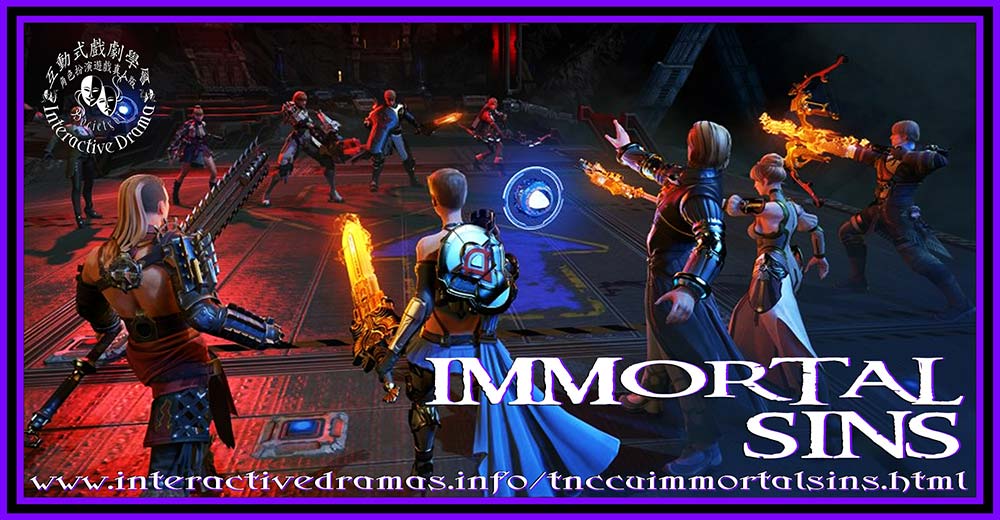
Interactive Drama Duration
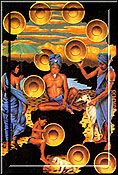 Although "Immortal Sins" is designed to run for approximately three hours, it is up to the Director to gauge if this is enough time for the players (are they still running around talking to other players?) or if it is dragging on a little too long. This will vary from one group to the next.
Although "Immortal Sins" is designed to run for approximately three hours, it is up to the Director to gauge if this is enough time for the players (are they still running around talking to other players?) or if it is dragging on a little too long. This will vary from one group to the next.
Events should progress roughly in this order:
- After the opening speech is completed, most characters will probably concentrate on their objectives.
- The gods should negotiate points they would like to see in the final agreement.
- Remember, all challenges must take place before the final endgame."
Number of Directors
The original "Immortal Sins" scenario by James O'Rance was written for forty characters. Classroom use of the interactive drama scenario is for more characters. The class instructors will act as directors, although one is the main director and the other two will serve as player characters along with their roles as secondary directors - this ensures that students have interaction and evaluation opportunities both in and out of charactere.
Layout for the Conclave
While existing in a multidimensional pochet universe, the Conclave proper is an area set aside with defined directions - North, South, East, and West. Room will be allowed for players to interact around it. Details will be explained on performance day.
Props and Costumes
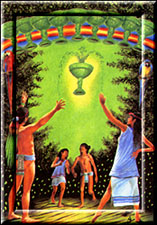 This is a fantasy scenario set in a multiverse beyond space and time in which the gods are no longer myths but a form of reality. Costumes depend upon the character's Pantheon. Those from the Norse should dress in Norse or Viking clothing. Those from the Dragon should dress in African or similar styles, particularly Tribal. The peoples from the Aztec should wear Aztec, Mayan or Inca style clothing. The Indian dress in Hindi or Indian styles. The Heliopolitan should be dressed in costumes similar to those worn by the rulers of Ancient Egypt. Visitors from afar should wear clothing appropriate to their culture. See the costuming suggestion for more information - as well as suggested clothing colors for more simplified costume options for less complicated course sessions.
This is a fantasy scenario set in a multiverse beyond space and time in which the gods are no longer myths but a form of reality. Costumes depend upon the character's Pantheon. Those from the Norse should dress in Norse or Viking clothing. Those from the Dragon should dress in African or similar styles, particularly Tribal. The peoples from the Aztec should wear Aztec, Mayan or Inca style clothing. The Indian dress in Hindi or Indian styles. The Heliopolitan should be dressed in costumes similar to those worn by the rulers of Ancient Egypt. Visitors from afar should wear clothing appropriate to their culture. See the costuming suggestion for more information - as well as suggested clothing colors for more simplified costume options for less complicated course sessions.
In addition to the cultural basis for costumes, players should use certain dominant colors for costumes depending upon the pantheon of their characters:
| PANTHEON |
COSTUME
CULTURE |
COSTUME
COLOR |
| Abyss |
African |
Black |
| Babylonian |
Middle Eastern |
Golds and Yellows |
| Celestials |
Western Angelic |
Whites |
| Dragon |
Asian |
Purple |
| Heliopolitan |
Ancient Egyptian |
Silver |
| Hell |
Medieval Europe |
Red |
| Norse |
Viking |
Greys |
| Olympian |
Ancient Greek |
Blue |
| Individual |
Any |
Green |
| Non-Divine |
Any |
Brown |
The colors and cultures within this table are suggestions. However, players should coordinate with the other players within their pantheon and coordinate costume culture and colors. Individuals may then express their own characters in unique ways within the constraint of the pantheon's chosen costume culture and color scheme.
Non-Player Characters
Depending upon the number of players present, there may be certain characters in the run who are portrayed by Directors rather than Players. Treat them as regular characters, although their functions are to provide in-scenario information and to keep the plot running smoothly. This is particularly true of the director characters.
What is Involved in a Challenge?
 There are variations of a challenge.
There are variations of a challenge.
Trial by Combat, wielding lethal weapons and fighting to the death (there are three goes at RPS and the best two out of three temporarily "kills" the other - which means the character must sit silently for fifteen minutes before being allowed to revive).
How the Interactive Drama Ends
The interactive drama is designed to conclude with the signing of the new Conclave Agreement, or a cataclysm. Timing and focus will be upon the creation of the new agreement.
Advance Warning
Some players tend to get more caught up into the subplots than others so the Director will prompt the characters to give everyone a bit of a warning before calling a vote or for the speeches to be heard (e.g. "Ten minutes until the Speech Making of spokespersons of the pantheons" or "Fifteen minutes to the Voting the Agreement Platform"). This way, players should have a last chance to talk to other players or to tie up any loose ends.
Rules of the Event
 Interactive Dramas or Live Action Role-Playing Games (LARPs) are difficult to describe. They combine elements of table-top roleplaying (e.g. Dungeons and Dragons) and improvisational theatre. The closest thing you'll find to an Interactive Drama is a professional staged murder weekend (the main differences are that Interactive Dramas are not as slickly produced, cost much less, and have a greater range of themes).
Interactive Dramas or Live Action Role-Playing Games (LARPs) are difficult to describe. They combine elements of table-top roleplaying (e.g. Dungeons and Dragons) and improvisational theatre. The closest thing you'll find to an Interactive Drama is a professional staged murder weekend (the main differences are that Interactive Dramas are not as slickly produced, cost much less, and have a greater range of themes).
You are a Player. The person you are pretending to be is your Character. You have a Character Sheet which tells who your Character is, and what your Character wants (your Goals). You achieve your Goals by talking to the other Characters - sharing secrets, telling lies, making alliances, betraying your friends, etc. The bulk of what you'll do during an Interactive Drama can be achieved just by talking to people (and sometimes by eavesdropping on someone else's conversation). There are other things you can do
fairly easily as well. For instance, hiding in the closet is accomplished by opening the closet door, stepping inside, and closing the closet door.
Some things you may want to do, however, are a little more complicated. If you want to steal somebody' s pants, or blow up the ship, or something else you shouldn't actually do, then you have to talk to the Interactive Dramatist or Director.
The Interactive Dramatist: The Interactive Dramatist or "Director" runs the game. He is your referee. The Director is outside the game, so you should act as if he's not there. The Director doesn't have a Character so your Character can't talk to him. However, the Director must be obeyed. His powers are almost absolute - only chance and fate can overrule the Director. If the Director whispers in your ear "You have just fallen unconscious," then lie down on the floor with your eyes shut. If the Director shouts "you hear a crash coming from the hold!" then everyone should act as if they hear a crash (and perhaps run to the hatches to investigate). If the Director bolds up a sign reading "You don't see anything" then act as if nothing is happening. If the Director tells you to "take off your clothes and stand on your head," he is probably just making a really bad joke or he is abusing his power and you should ask him to reconsider (unless, of course, that's something you really want to do anyway).
Directors with Players: Ignore a player who is talking to the Director. Don't bother them, and don't eavesdrop! If a Director and a player are going somewhere, ignore that as well. The Director is moving the Character (e.g. the Character wanted to leap from the yardarm. It isn't a good idea to actually do this and we don't actually have a real yardarm handy, so the player walks with the Director to a spot under where we imagine the yardarm hangs.)
Whistles: If the Director needs everyone's attention suddenly, he can blow his whistle or give a shout. When you hear a whistle or the Director shouting instructions you must immediately freeze until the Director tells you to resume play. A good Director should be able to avoid getting on your nerves with his damn whistle, so don't worry.
Non-Player Characters: Sometimes a new Character enters the game, but it is a part too small to give to a Player. This is a Non-Player Character (NPC) and the Director handles this part. If a character catches a mermaid or if angels descend from heaven, or if pirates storm the ship, then someone has to play the mermaid, or the angels, or the pirates. The Director temporarily enters the game as the required NPC. This is the only time your Character can interact with the Director. Treat NPC's just like other Characters (Note: this is a rare opportunity to kill a Director, but don't do that unless your Character has a good reason to kill the NPC).
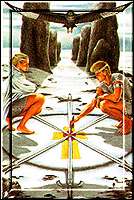 Keep the Director Informed: If you are planning something sneaky (such as an ambush) try to tell the Director in advance. There are things you don't know (and the Director does) that may affect the outcome of your action.
Keep the Director Informed: If you are planning something sneaky (such as an ambush) try to tell the Director in advance. There are things you don't know (and the Director does) that may affect the outcome of your action.
Item Cards: These are cards you may get with your character packet at the beginning of the scenario event, and they represent unusual things your character owns. Item cards are written in as little detail as possible and only tell you what you would know if you found the item lying on the floor (further detail is available if you examine a found item, which you do by asking the Director about it). Details about your items are given in your character sheet.
While they may not have cards, each Tor is assumed to have a "torc" costume prop which counts as an in-game item and can be lost in certain ways.
Feel free to bring or borrow props for your items but only for items your character has. Don't bring a gun if you don't have an item card listed on your character sheet for a gun; you weren't given that item card because the Director doesn't want you to have a gun. Also, to make sure to keep your item cards with your props. A prop gun without an item card is just a prop gun and can't harm a soul.
Item cards move around just like real objects; they can be exchanged, stolen, lost, hidden, found, and sometimes destroyed.
Special Ability Cards:
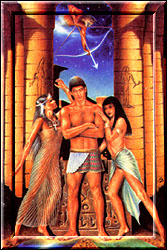 These cards represent a Character's special abilities and they allow players to do things without having to go through a Director. If a player presents you with a Special Ability Card then read the card and obey the instructions. If the card says "Show me all your item cards," then hand your cards to the player with the Special Ability Card. If the card says "You are unconscious", then lie down on the floor with your eyes shut. Remember, your Character doesn't know what is happening; pretend to be unaware that your items have been examined, act confused about mysteriously fainting. Play along. Above all else, forget which Player showed you the card. Some cards cancel each other out, or result in a tie. A Special Ability Card with a red border beats a regular Special Ability Card. If a Special Ability Card says, "Take off your clothes and give me the tightest hug and the deepest kiss you've ever given anyone", then you're probably either playing in the wrong scenario or someone is cheating. If in doubt you may discreetly ask the Director for a ruling.
These cards represent a Character's special abilities and they allow players to do things without having to go through a Director. If a player presents you with a Special Ability Card then read the card and obey the instructions. If the card says "Show me all your item cards," then hand your cards to the player with the Special Ability Card. If the card says "You are unconscious", then lie down on the floor with your eyes shut. Remember, your Character doesn't know what is happening; pretend to be unaware that your items have been examined, act confused about mysteriously fainting. Play along. Above all else, forget which Player showed you the card. Some cards cancel each other out, or result in a tie. A Special Ability Card with a red border beats a regular Special Ability Card. If a Special Ability Card says, "Take off your clothes and give me the tightest hug and the deepest kiss you've ever given anyone", then you're probably either playing in the wrong scenario or someone is cheating. If in doubt you may discreetly ask the Director for a ruling.
Real Time, Space, and Stuff: Real Time means if something takes you 10 seconds to accomplish you must spend 10 seconds pretending to do it. If something takes 10 minutes, spend 10 minutes of game time doing it. Real Space is a similar concept. If you left something in the forecastle you have to walk back to the forecastle to get it (or at least to the part of the gaming area we pretend is the forecastle). If you want to get the bazooka you have stashed in the hold, you have to go down there. Real Stuff is an exception to the rule about needing item cards for everything. If you need a fork, you may find one in the kitchen. This saves the Director the trouble of writing up a card for everything. If there's something in the area that you can't use in the game, the Director will tell you in advance. If you find an item that would be out of place, it probably doesn't belong there. Ask the Director to make sure. Of course you never know what that digital watch is until you ask.
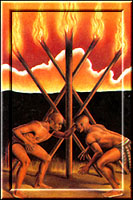 Combat: Even among the best of friends there is an occasional falling out. If combat occurs, follow the specific rules for this scenario as outlined below. You should remember to "roleplay" the attle beyond just comparing numbers on your character sheets. If you need specific help, get the Director. Tell the Director what you are doing and act out your actions, and the Director will determine whether it worked or not.
Combat: Even among the best of friends there is an occasional falling out. If combat occurs, follow the specific rules for this scenario as outlined below. You should remember to "roleplay" the attle beyond just comparing numbers on your character sheets. If you need specific help, get the Director. Tell the Director what you are doing and act out your actions, and the Director will determine whether it worked or not.
Combat is going to be very simple. It will be based on Rock, Paper, Scissors.
Basically, any time you wish to have combat with another player, just let that person know you are attacking and the two of you "stage" a combat. The attacker calls out an attacking move and the defender then calls out a defense followed by an attack. The attacker then calls out a counter defense and another defense and the defender calls a final attack and defense. Then, a game of RPS is played. That tells you who wins. The players then act out the moves they have called in very slow motion with the last two moves dropped or acted upon depending upon the outcome.
Please act out all combats in this way. Get into it but stay slow for safety's sake.
When someone has "lost" a combat, that person must "play dead" for the next five minutes, doing nothing but lying dead on the floor. Of course, if someone takes your "stuff" there's nothing you can do about it (you may only take game-item-props not personal things). You may not read an "unconscious" player's character sheets or ability cards either nor may you take them (they don't actually exist in game terms). If you wish to move an "unconscious" player, you may not drag the person, ask him or her to get up and walk to wherever you want to throw the body. You must never touch another player, conscious or unconscious, without that person's explicit permission to do so. Everything in a scenario is based upon informed consent. So, "no" always means "no" - in character or out. Touching another person in an inappropriate place can get you booted immediately from the game (or worse). Read the Troupe House Rules, know them, understand them, and abide by them at all times.
Normally, the Gods of the Pantheons would not kill one another within the Conclave grounds and so if you wish to violate ethics to that degree you need to consult with the Director on method (and he will probably veto most folks taking that course of action without very very very good reasoning).
There are no rules for group combat as the gods do not find such combat to have any honor and even the most dishonorable amongst them would never resort to such underhanded treachery . . . except for those to whom dishonor is a badge of honor indeed (ask a Director).
Disclaimer: This information on combat is not here to suggest that fighting is the best way to solve your problems, other than in the case of trying to win worshippers. Otherwise combat against a foe at the Conclave is considered grounds for immediate loss of deity status. Of course we all believe that using discussion and persuasion is a much more constructive method for reaching your goals.
IN and OUT of CHARACTER: Since you are here with your friends, it is natural to want to drop character and talk to them. Unfortunately while you are doing this, someone else's Character may need to speak to your Character. In General, it's a good idea to stay in Character. You'll probably find you enjoy the game more that way. On the other hand, try to be tolerant if someone steps out of the game on you. As an addendum to this, you will find your experience to be all the more positive the better your costume and props are.
The Impossible: Supernatural Manifestations, Extra Sensory Perception, the occult, weird science are all things we understand to be impossible in the real world. This is not the real world. As similar as it may seem to the reality the designer reserves the right to include the impossible in this game. Do not expect it, especially if this is something your Character Sheet says you don't believe in. But it is only fair to warn you that the impossible cannot be ruled out. (A further warning: the above paragraph could just be misdirection.)
Honor: Though it is possible that one or more of the characters are not ethical, it is imperative that all players be honorable and fair. Never look at someone else's character sheets, or attempt to twist the rules. This interactive event has no winners or losers. Cheaters will be dealt with rather harshly.
Rules of the Event: This edition of Temple of the Winds is being presented by your host. All players must abide by any "house rules" set by the host of your event.
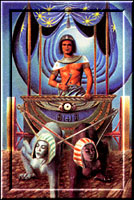 More on Costumes, Make-Up, and Props:
This is a costume event. So, dress and equip your character as closely as possible to the description in your character sheet. Some folks may have more trouble than others. While we won't eject you from the venue if you can't find a pair of kilt, robe, cloak, or the like, you'll certainly feel more into it the closer you can manage. So, please do try to at least make at least a rudimentary effort at costume, make-up, props, and effects material. Please do look at the various sites appropriate to your clan in the web resources section for ideas as well as the illustrations throughout this introductory web page. Your final costume should be based upon what your character's clan as well as his or her goals, ambitions, or personality characteristics. It doesn't have to be Hollywood or grand theatre . . . heck, paper masks and colored construction paper with aluminum foil is acceptable . . . just give it a go and let's have some fun. More on Costumes, Make-Up, and Props:
This is a costume event. So, dress and equip your character as closely as possible to the description in your character sheet. Some folks may have more trouble than others. While we won't eject you from the venue if you can't find a pair of kilt, robe, cloak, or the like, you'll certainly feel more into it the closer you can manage. So, please do try to at least make at least a rudimentary effort at costume, make-up, props, and effects material. Please do look at the various sites appropriate to your clan in the web resources section for ideas as well as the illustrations throughout this introductory web page. Your final costume should be based upon what your character's clan as well as his or her goals, ambitions, or personality characteristics. It doesn't have to be Hollywood or grand theatre . . . heck, paper masks and colored construction paper with aluminum foil is acceptable . . . just give it a go and let's have some fun.
Please remember that in addition to the cultural basis for costumes, players should use certain dominant colors for costumes depending upon the pantheon of their characters.
Photographs: During the scenario run of Immortal Sins players are welcome to take photographs for their personal scrapbooks as long as such picture taking doesn't get in the way of actually playing the piece. In any case the Director will take photos for the web gallery. Please do try to help us make certain we have at least one or two good shots of each player, especially those in full costume.
Disclaimer: The examples used above are for purposes of demonstration only. They are not meant to imply that lies, thievery, murder, mayhem, explosions, pirates or mermaids will be included in this scenario.
Immortal Sins Resources
from the web
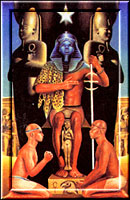
As stated several times elsewhere, in addition to the cultural basis for costumes, players should use certain dominant colors for costumes depending upon the pantheon of their characters. This is an important point so please follow these guidelines!
Here are some places on the web you can use for Immortal Sins inspiration for characters, costumes, props, and other ideas. Many of the sites are for costumes or similar resources.

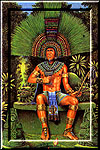

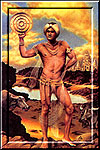

If you haven't read the Troupe Rules, do so now. You are required to abide by the rules whether you know them or not. Rules violations may lead to "booting" and exclusion from this or any other future session.
Certain briefing and promotional material from the original scenarios, as they appeara in Morgana Cowling's The Freeform Book and James O'Rances Immortal Sins, has been reprinted here with permission from the author. In order to produce this particular performance of Immortal Sins with the Taiwan Interactive Theatre Society at this time, we have found it necessary to make certain modifications to the scenario. These modifications are in no way intended as infringements upon the rights of the author or the integrity of the piece. They were made within the confines of fair use for performance much as theatrical companies may find it necessary to cut or modify a play in order to suit the needs of their troupes or a traditional role playing club may need to adapt an RPG module to fit the campaign. Our "cutting" is neither available nor intended for distribution. Those wishing to produce this scenario should acquire a legitimate copy of the original scenario.
Disclaimer
This interactive drama freeform roleplaying scenario is a work of fiction, intended for recreational purposes only. While many (most, all) of the deities described herein are those of living religions, no disrespect is intended to believers in those faiths. This is a playful take on the mythic elements of multiversal constructs and in no way reflect any disrespect toward the actual divine entities portrayed herein, whether or not they actually exist or are merely fictional constructs of ancient man's need to explain that which he does not comprehend.
If you are interested in more scenarios of this type and have not yet joined the troupe's Facebook troupe at https://www.facebook.com/groups/taiwaninteractivedrama feel free to do so now.
More information to come as we have a better idea of who will be playing and as it becomes available.

台灣互動式戲劇學會
Taiwan Interactive Theatre Society
實境RPG (角色扮演遊戲真人版)


|